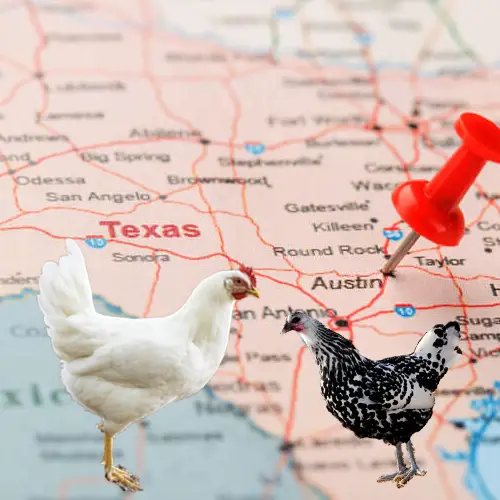Texans take pride in just about everything, whether it’s their football teams, barbeque, or egg-laying chickens. There’s no denying that a chicken coop full of freshly laid eggs is a satisfying sight for homesteaders and hobbyists alike. But if you’re looking to raise the best egg-laying chickens in Texas, you’ll also want to consider other factors:
- Heat Hardy
- Broodiness’
- Temperament
- Egg-laying
The weather can be hot and humid or cold and dry. If you live in an arid area, it’s important to choose a breed that is well adapted to your climate. During the hot summer months, temperatures sometimes reach 100 degrees.
Certain breeds of chickens may be better suited than others to the hot and humid conditions of Texas.
You don’t want to get too fancy with your chicken selection when it comes to laying eggs. If you want a breed that lays colored eggs or has a funny-shaped head (like the Silkie), make sure you are prepared for higher costs and more difficulty in feeding and raising them.

If you live in the city or suburbs of Texas, going through all this trouble is probably not worth it! You can find plenty of commercial options at your local grocery store or farmers’ market if you live in an urban area (for example, organic cage-free brown eggs from Whole Foods).
Nevertheless, continue reading to find the best chicken breeds for Texas. Some of these hens lay well and produce decent meat, making them a suitable choice for a Texas backyard flock.
Mediterranean breeds tend to be slimmer, with larger combs that dissipate heat well
In hot and humid climates, it is important to choose chickens with large combs. Chickens’ combs are their cooling system and also help regulate their body temperature.
If you’re looking for a best-egg-laying breed in Texas that doesn’t have the issues with humidity, heat, and fertility but still lays pretty well, we suggest the Mediterranean sort:
- Ancona
- Catalana
- Egyptian Fayoumi
- Leghorn
- Hamburg
Mediterranean breeds are known for their resilience in hot weather and are available in many different colors and types. They don’t need as much shade as some other breeds, but they do need plenty of fresh water.
Dual-purpose breeds like Rhode Island Reds (or just Reds), Plymouth Rock(Rocks), and so on are also reasonable to be raised in Texas.
Now, let’s focus more on Mediterranean chicken breeds and why you should choose them!
1. Ancona Chicken Breed (characteristics, eggs per year, and broodiness)
One of the best chickens to raise in Texas.
The Ancona chicken breed was developed in the early 1900s by crossing some other Mediterranean breeds with Cochins and Leghorns. The goal was to create an egg layer that would be easy to raise and adaptable to different climates.
In 1888, the first Anconas were imported into the United States. They were recognized by the American Poultry Association in 1898 as a single-combed variety and, in 1914, rose-combed types were recognized.
It’s been classified as a Light-Soft Feathered breed by the Poultry Club of Great Britain.
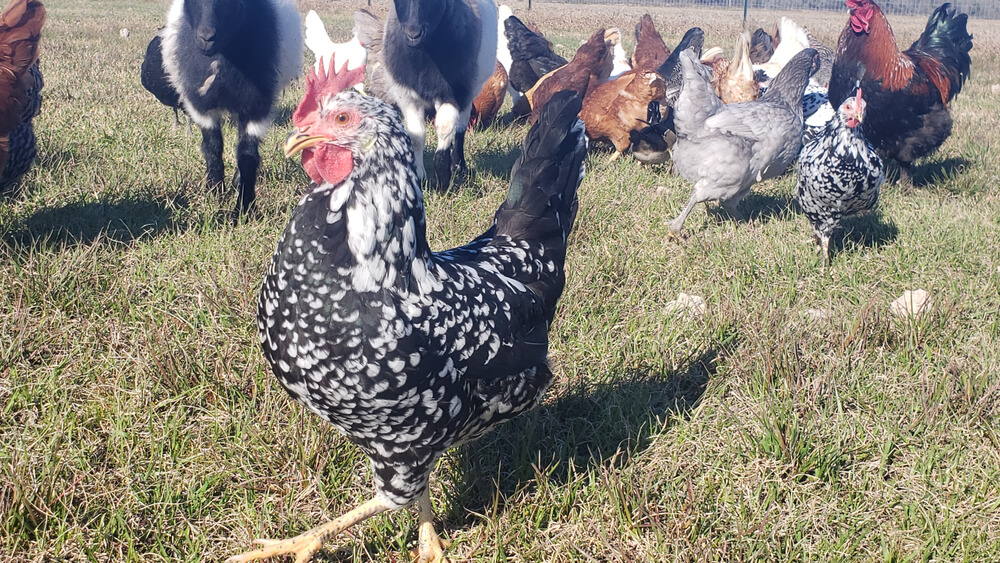
Characteristics of Ancona chicken
Ancona chickens are very similar in size and shape to Leghorn chickens, but they differ in that their backs slope downward from shoulders to tail, showing a slight angle where the two sections meet.
While Leghorns are known as flighty, Ancona takes the term “pheasant-like” to a whole new level. They are known to fly over vast distances when foraging and are quite reclusive. We wouldn’t suggest getting this breed as a pet chicken.
The Ancona chicken is a good choice for Texas because it has the following characteristics:
Good-layer (around two hundred and fifty eggs per year – 250)
We can also say that Ancona is one best egg-laying chickens for Texas. Eggs can be light brown or white, depending on the variety. They tend to be smaller than most commercial eggs but larger than some other bantam breeds, such as Silkies or Polish.
Have a little affinity for broodiness
Many chicken keepers have pointed out that Ancona chickens have little to no tendency for broodiness. Although hens are great mothers, they will take care of their little baby chicks!
Heat-tolerant chicken
Ancona’s might be the best chicken for Texas heat because it’s heat-hardy and can survive hot temperatures without any problems at all. This makes them an excellent choice for Texas because it gets so hot there sometimes during the summer months.
If you are looking for a chicken that can do it all, the Ancona is worth considering.
2. Catalana Chicken Breed (characteristics, eggs per year, and broodiness)
This is a dual-purpose breed coming from Barcelona, Spain. It’s not common in the US, but it’s well-known that this breed provides a respectable amount of meat and eggs. Their variety is BUFF, and in 1949 are recognized by the American Poultry Organization.
Catalana is one of the best dual-purpose chickens for Texas!
It’s hard to find this breed in the US, although Catalana exceeds pretty much in Latin America!
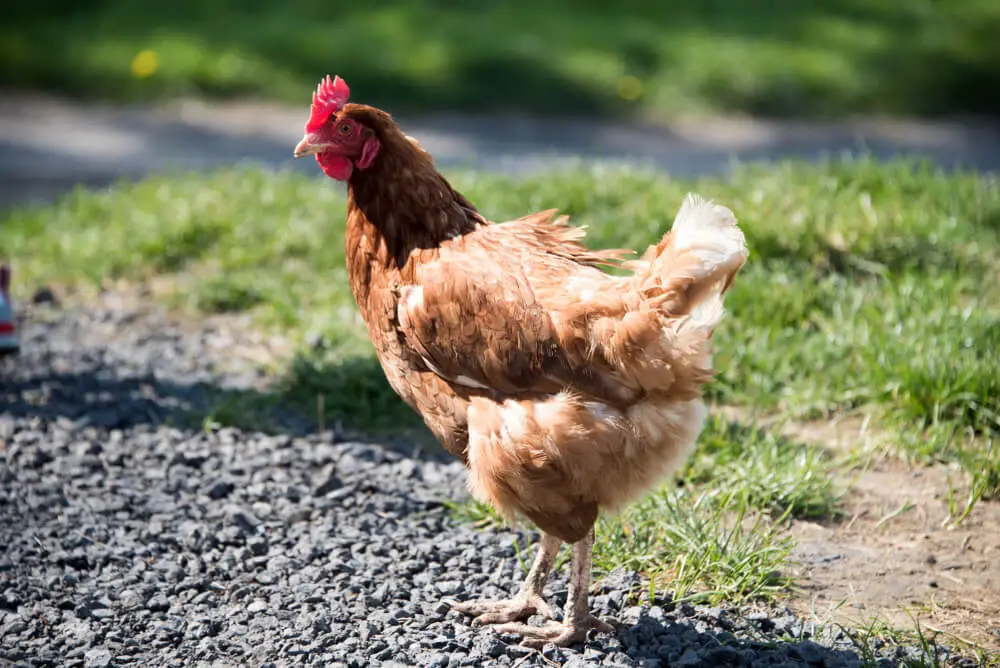
Characteristics of Catalana chicken
Catalana (Gallina del Prat) is a beautiful bird with a single comb and white earlobes.
Their plumage is golden red with black tail feathers with a green sheen to them. They do not thrive when confined and they tend to be high-risk fliers, which means they are likely to fly over fences and out of pastures if they can get away with it.
Similar to Ancona, this breed doesn’t fit very well with kids and it shouldn’t be kept as a pet chicken.
So, why Catalana chickens are good for Texas, especially close areas to Mexico like Rio Grande, Zapata, Hebbronville, Los Acros, etc?
Greatest for hot climates
Yes, they are rare in the US, but there is a reason why. This chicken prospers in hot climate areas, like Texas! That’s why we included this breed in our selection. It might be hard to attain this breed, but trust us, it’s 100% worth it!
Are Catalana Chickens good egg layers?
Catalana chickens lay around 180-200 eggs per year, which categorize them into medium layers. Their egg color is white.
Does Catalana Chickens go broody?
It is well-known that this breed doesn’t go broody.
Good for small farms
Catalana chickens are one of the best free-range chicken breeds. It’s perfect if you’re on a small farm, or maybe even if you just have a smaller homestead with only a few chickens to raise.
As we mentioned above, they might be hard to acquire, but in the end, they will be a great addition if we take into consideration the really hot summers in TX.
3. Egyptian Fayoumi
Some consider this breed as ancient, coming from Egypt-west of the Nile river.
This breed is classified as LIGHT-Rare Soft feather by the Poultry Club of Great Britain and has been approved by the American Poultry Association in 1874.
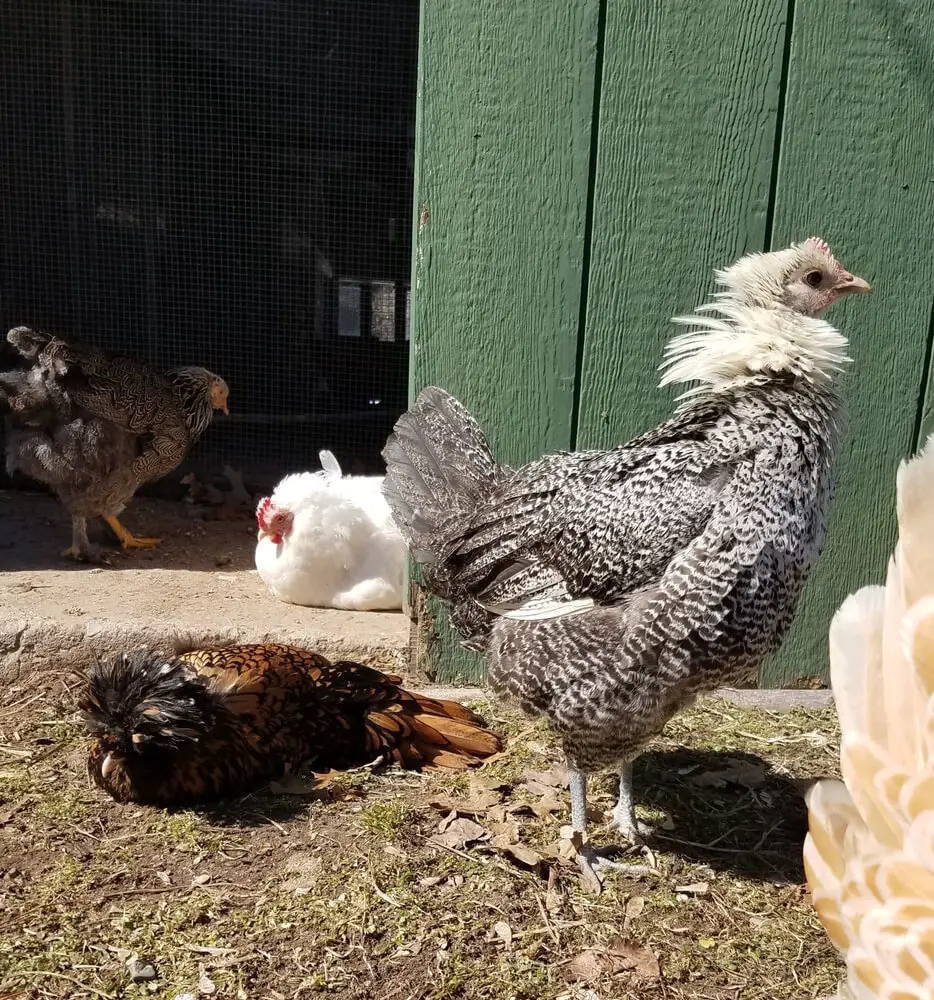
Characteristics of Fayoumis chicken
Very intelligent, active, and fantastically alert type of breed. Most chicken keepers describe them as the best free-range chickens. Also, they are flighty chickens and can escape from predators easily.
Fayoumis have a single comb, with even serratations. Their wattles, earlobes, and comb are reddish, and their eyes are brown.
There are two color varieties known; gold-pencilled and silver-pencilled.
You are wondering, are Egyptian Fayoumi chickens good for the Texas area?
Indeed, they are! Here are some pros that Fayoumis chickens have:
Are Egyptian Fayoumi Good Layers?
Hens have a tendency to lay from 180 to 210 eggs per year. The color of the eggs is white or tinted.
Outstanding for warm temperatures
The tropical climate is not a problem for them, they survive pretty easily. Fayoumis hens and cockerels are well-known for their hardiness and resilience. Egyptian Fayoumi Chickens are one of the best chickens for Texas heat!
Excellent Foragers
They prefer to have room to roam and do better if allowed outside.
Broodiness level=low
After 30 months more or less, they might become broody. So, before that, you will have a good amount of eggs gathered from them!
4. Leghorn
Also, Leghorn is one of the best chickens to raise in Texas!
The Leghorn is a breed of white or brown chicken. It is one of the most popular meat and egg-producing breed and is used extensively for both farm and commercial egg production.
Similar to Catalana, Leghorn is also one of the best dual-purpose breeds for Texas!
In fact, we can also say that Leghorn is the best egg laying chicken for Texas. Over the course of a year, Leghorn hens may lay anywhere from 280 to 320 eggs.
It was originally raised in the area of Leghorn, Italy, but has been exported worldwide. The breed was first imported into the United States in 1828 by William Crowell, who brought birds from Italy to New York City.
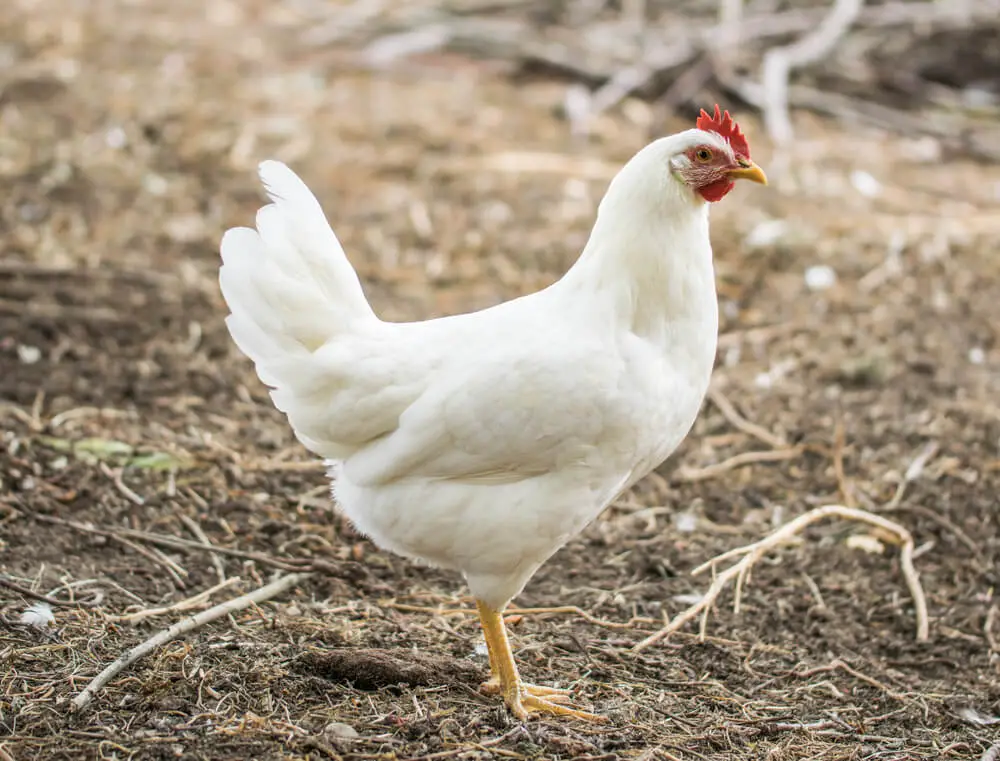
Characteristics of Leghorn chicken
The Leghorn is a large bird with a heavy frame, broad breast, and a large head.
The comb is single but horned, with five points on each side. The legs are yellow while the shanks are white (sometimes tinged light brown).
The earlobes are red or flesh-colored; this trait is common in Mediterranean breeds but not found in many others. The earlobes are also used as an identifying characteristic for Fanciers who choose to show their chickens at poultry shows.
They were originally bred for their prolific egg-laying ability and good mothering skills making them very adaptable to free-range situations where they can utilize available grasses, insects, and other natural foods in their diet as well as commercial feeds if desired by their owners.
Also, they do very well in places where humidity is high and the climate is tropical.
So, can we define what are the best laying hens for Texas?
Best laying hens for Texas are definitely Ancona with over 250 eggs per year, and Leghorn with over 300 eggs per year.
5. Hamburg Chicken breed
Hamburg chicken is a breed of chicken originating in the city of Hamburg, Germany. It was developed during the early 20th century through cross-breeding between several other breeds. In its native country, it is known as a Hamburger Huhn or Hamburger Hahn and is not a separate breed.
Hamburg originated in Germany as a crossbreed between various types of chickens. The goal was to create a bird that would lay eggs all year long and be small enough to fit into the chicken coop. By the early 1920s, these birds had become popular among urban chicken owners and spread throughout central Europe and the United States
In 1960, Hamburg was recognized by the American Poultry Association.
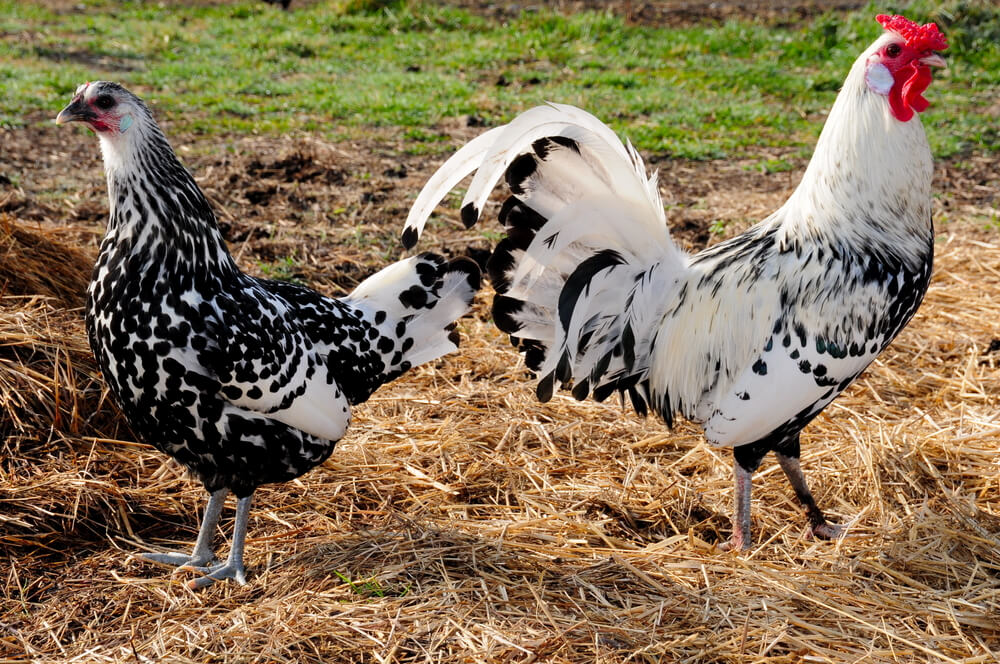
It comes in six varieties:
- Silver Penciled
- Golden Penciled
- Silver Spangled
- Golden Spangled
- White
- Black
Today it is still considered one of the most popular breeds in Germany because it can survive well on limited food rations and is heat-hardy chicken!
Hamburg chicken is a moderate egg layer, with around 170-210 eggs per year. Their egg color is white and medium-sized. They go rare broody, and they are both hardy for winter and summer.
6. New Hampshire Chickens
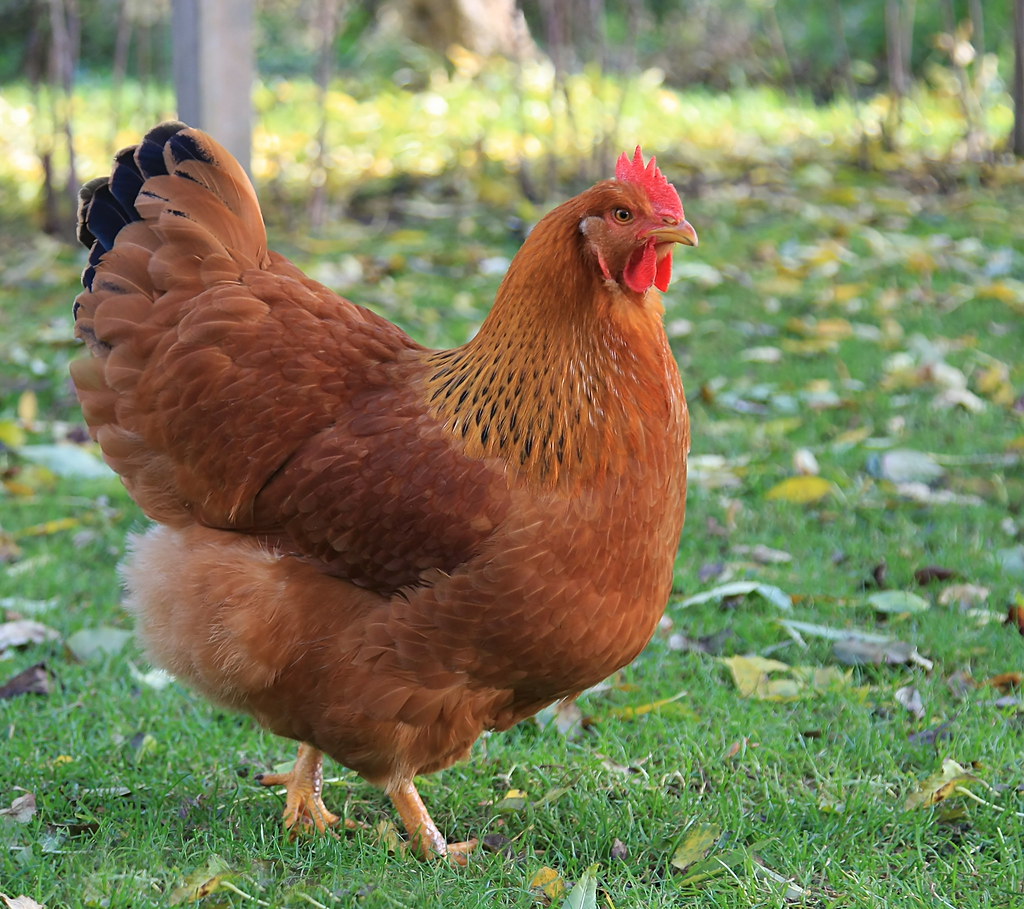
Originating from New Hampshire in the early 20th century, this breed stands out for its early maturity and rapid growth. These robust, deep red chickens are known for their friendly and active nature, making them an ideal fit for backyard flocks in Texas.
With an impressive egg-laying capability, a New Hampshire hen produces around 200 to 280 medium to large brown eggs annually. Notably, they start laying at a younger age compared to other breeds, contributing to their popularity among poultry enthusiasts.
Broodiness is a common trait, with these chickens showcasing excellent mothering skills. They adapt well to various climates and are particularly well-suited for the Texan environment, demonstrating resilience in the heat and prowess in foraging.
In summary, for those seeking a reliable, hearty egg-layer adept at handling the diverse Texas climate, New Hampshire Chickens are a commendable choice.
7. Isa Brown Chickens
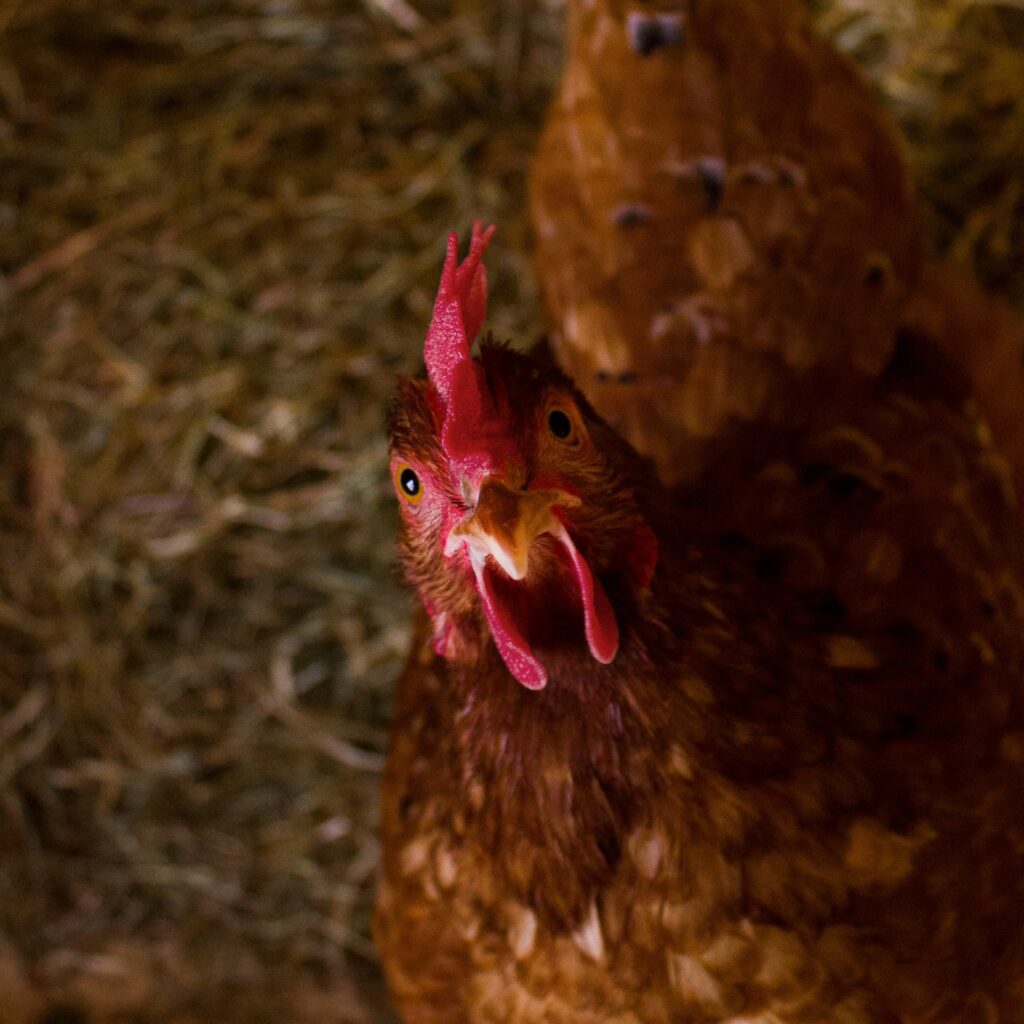
Hailing from France, Isa Browns are synonymous with prolific egg production, making them a favorite among poultry keepers. Exhibiting a reddish-brown plumage, these birds are a hallmark of versatility and adaptability, lending themselves well to various poultry rearing environments.
Boasting an annual egg yield of approximately 300 to 350 large brown eggs, Isa Browns are renowned for their consistent and bountiful laying. Their ability to start producing eggs at an early age further enhances their appeal to those seeking a reliable source of fresh, homegrown produce.
Despite their tendency to be less broody, Isa Browns are celebrated for their docile and friendly demeanor, making them an excellent choice for families and interactive poultry projects. Their adaptability to diverse climatic conditions makes them particularly suitable for the fluctuating temperatures experienced in Texas.
These chickens are hearty foragers, efficiently sourcing food across different terrains, which bodes well for those looking to raise them in the varied landscapes of Texas. Their resilience and ability to thrive in different settings make them a valuable asset to both novice and experienced poultry enthusiasts.
In conclusion, if a dependable, adaptable, and prolific egg-layer is what you’re seeking, Isa Brown Chickens are a prime candidate, especially in the diverse and dynamic climate of Texas.
8. Barred Plymouth Rocks Chickens
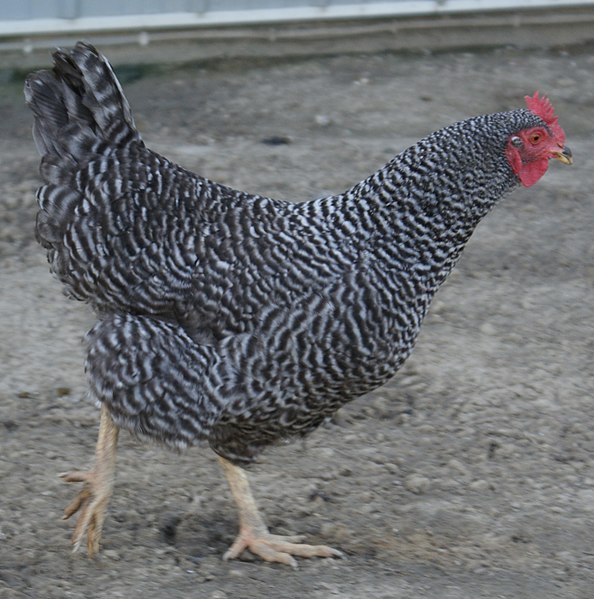
Steeped in a rich history, Barred Plymouth Rocks, often simply referred to as “Barred Rocks,” are a quintessential choice for poultry enthusiasts. With their distinctive black and white striped plumage, these birds are not only visually appealing but also versatile, making them a staple in many backyard coops.
Renowned for their consistent laying, Barred Rocks deliver approximately 200 to 280 large brown eggs annually. This prolific egg production, coupled with their ability to adapt to various climates, makes them a sought-after breed among those seeking self-sufficiency in egg supply.
Famed for their calm and friendly nature, Barred Rocks are well-suited to family environments and community settings. They mingle well with other breeds and exhibit a strong sense of community, enhancing the harmony within diverse flocks.
Adaptability is a key strength of Barred Rocks, allowing them to thrive in the varying climates of Texas. Their hardiness and efficient foraging skills make them well-equipped to explore and utilize the diverse Texan landscapes for sustenance.
To sum it up, Barred Plymouth Rocks Chickens are a harmonious blend of visual appeal, versatility, and consistent egg production, making them a valuable addition to any flock, especially in the dynamic environments of Texas.
9. Welsummer Chickens
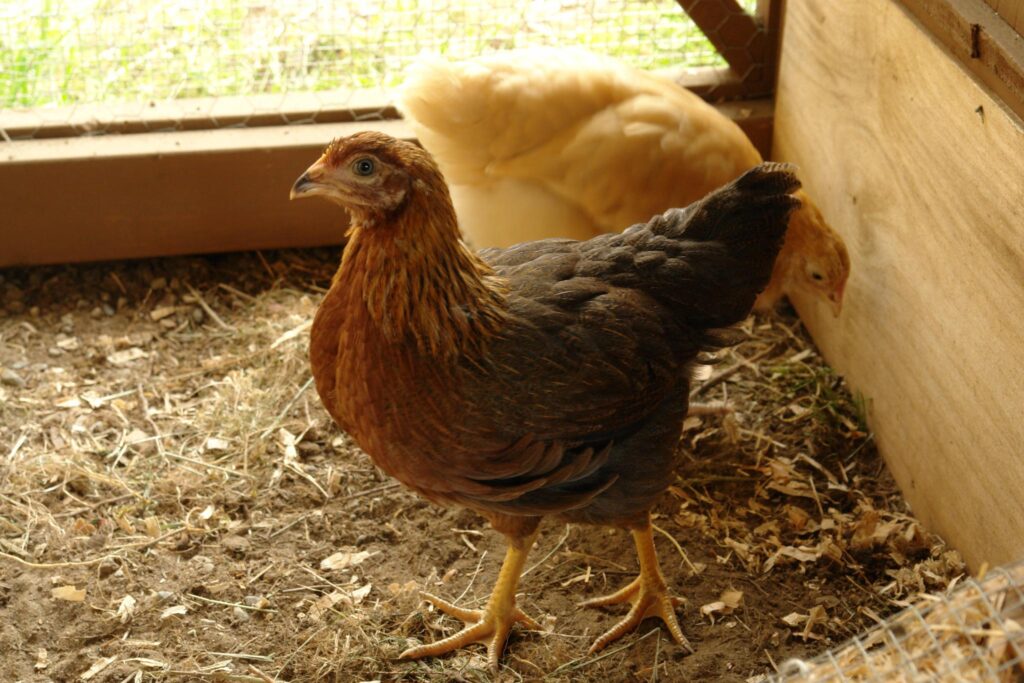
Originating from the Netherlands, Welsummer Chickens are celebrated for their striking appearance and the unique, dark brown eggs they lay. Distinguished by their warm, reddish-brown plumage and expressive eyes, these chickens are a picturesque addition to any backyard.
Welsummers are known to lay approximately 160 to 200 terracotta-colored eggs each year, often with characteristic dark speckles. This distinctive egg coloration, along with their steady laying pattern, contributes to their popularity among poultry aficionados.
Endowed with a friendly and outgoing temperament, Welsummers make delightful companions for families and individuals alike. They are known to integrate well within diverse flocks, fostering a sense of unity and cooperation among different chicken breeds.
The adaptable nature of Welsummer Chickens serves them well in the diverse climatic conditions of Texas. Their foraging proficiency and hardiness enable them to thrive in varied landscapes, making them a resilient choice for Texan homesteaders.
In essence, Welsummer Chickens encapsulate a blend of beauty, uniqueness, and adaptability, standing out as a charming and practical choice for those seeking a touch of color and personality in their flocks in Texas.
10. Andalusian Chickens
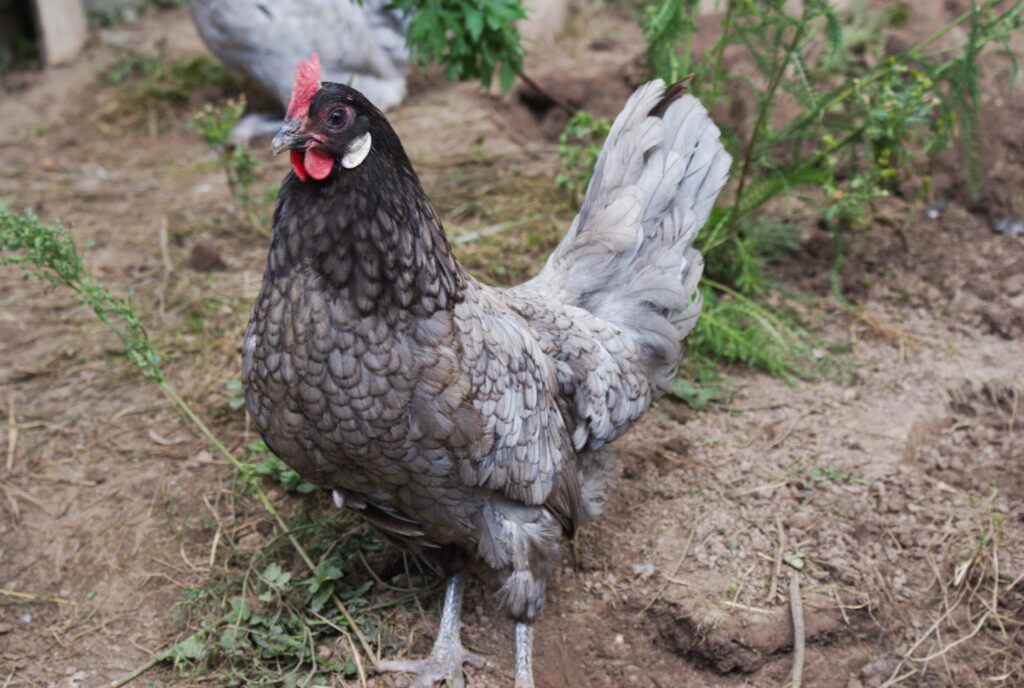
Hailing from Spain’s Andalusia region, Andalusian Chickens are a testament to elegance and hardiness. With their striking slate-blue plumage and active demeanor, these birds bring a dash of vibrancy and energy to any poultry flock.
Andalusians are reliable layers, offering a steady supply of around 165 to 200 medium-sized white eggs annually. Their adaptability to varied laying conditions contributes to their reputation as a versatile and dependable breed for egg enthusiasts.
Known for their lively and spirited nature, Andalusian Chickens integrate well into diverse poultry settings. They possess a natural curiosity and alertness, traits that endear them to keepers seeking engaging and interactive birds.
The inherent hardiness of Andalusians aligns well with the climatic diversity of Texas. Their adept foraging skills and ability to withstand temperature fluctuations make them a resilient choice for those navigating the dynamic Texan landscapes.
In summary, Andalusian Chickens embody a harmonious blend of aesthetic appeal, spirited interaction, and adaptability, marking them as a distinguished choice for poultry keepers in the multifaceted environment of Texas.
11. Sumatra Chickens
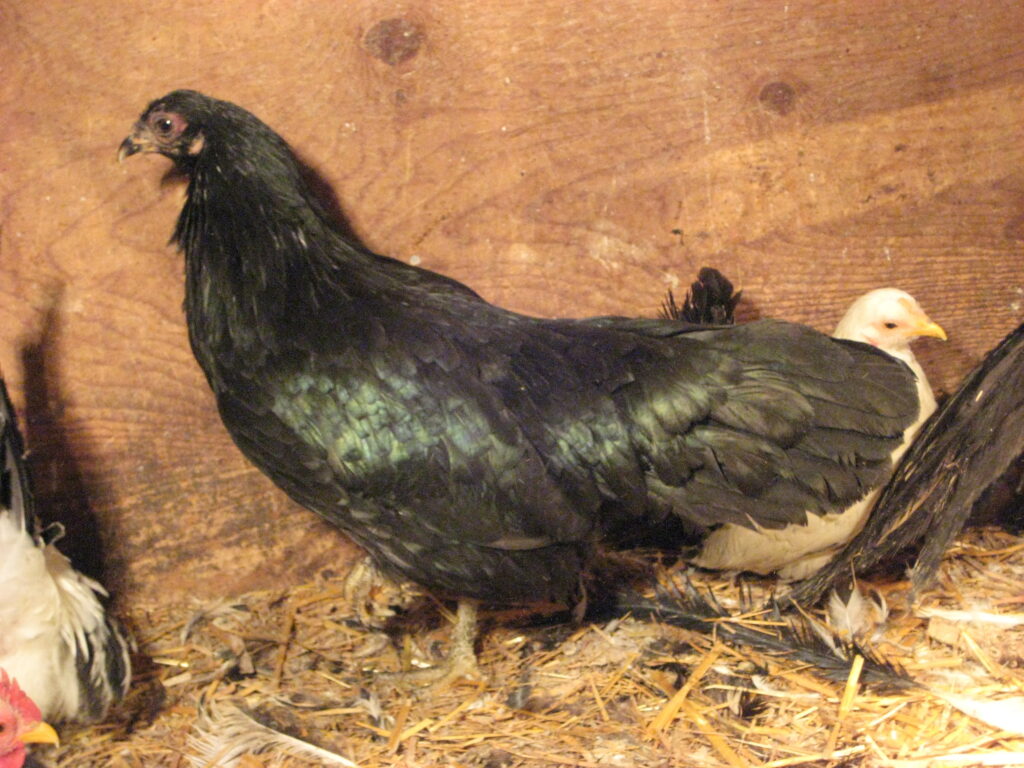
Native to the Indonesian island of Sumatra, Sumatra Chickens are a sight to behold with their lustrous black plumage and long, flowing tail feathers. These exotic birds are known for their agile and wild nature, making them a unique and captivating addition to any flock.
Sumatras are not prolific layers, but they still contribute around 100 to 120 small to medium-sized white eggs annually. What they lack in quantity, they make up for in the quality and uniqueness of their presence, adding diversity to the egg basket.
Characterized by their independent and flighty temperament, Sumatra Chickens prefer free-ranging and thrive in open spaces. They are adept at flying and roosting in trees, showcasing their natural instincts and adaptability to varied environments.
Suited to the diverse climates of Texas, Sumatras exhibit resilience and resourcefulness in foraging, navigating the landscapes with ease. Their ability to adapt and thrive in different settings makes them a viable choice for those seeking diversity in their poultry collection.
In conclusion, Sumatra Chickens offer a blend of exotic beauty, natural agility, and adaptability, presenting a unique option for those looking to diversify their flocks in the dynamic terrains of Texas.
FAQ
Best dual-purpose chickens for Texas?
If you want to raise chickens in Texas for meat and eggs, we suggest these six dual-purpose breeds:
- Black Australorps
- Dominique
- Sussex
- Delawares
- Brahmas
- Plymouth Rocks
Best rooster breeds for Texas?
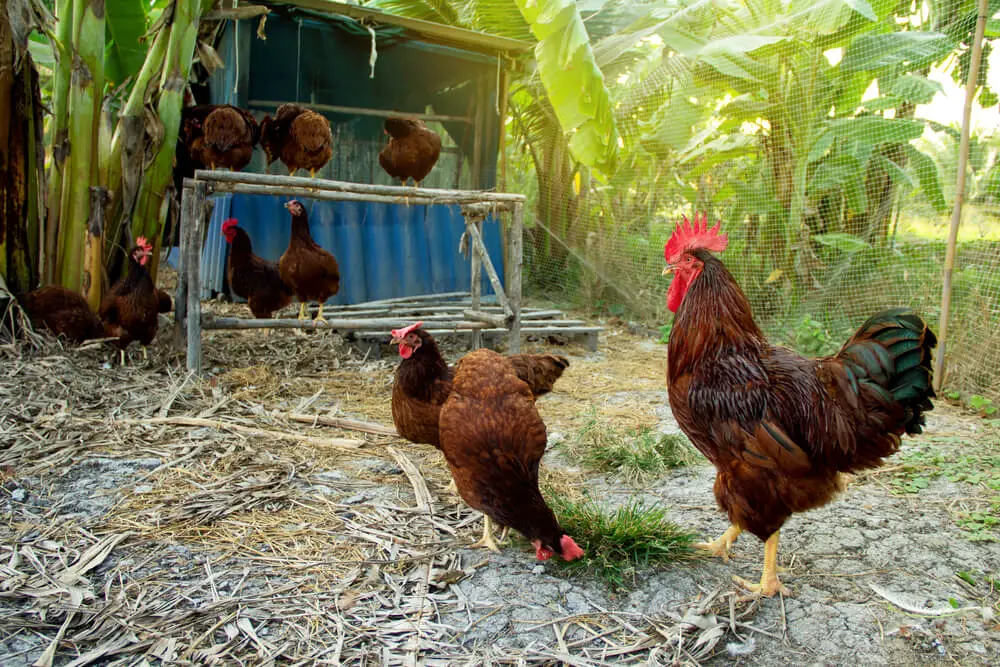
Although a lot of people avoid raising roosters, here are 5 texas rooster breeds that we recommend:
- Plymouth Rock
- New Hampshire
- Welsummer
- Sussex
- Rhode Island Red
Can chickens survive 115-degree heat?
The summers in Texas are long, hot, and unpleasant; the winters are short, chilly, and windy; and it is rainy and sometimes overcast skies throughout the whole year. The temperature seldom drops below 37 degrees Fahrenheit or climbs beyond 93 degrees Fahrenheit during the course of a year, although it regularly ranges from 48 degrees to 90 degrees.
So, can chickens survive in Texas heat?
It can be tricky raising chickens in texas heat. Chickens will need help from fellow Texans!
In the event that the temperature outdoors reaches or exceeds 90 degrees Fahrenheit, you should begin the process of cooling down your chickens. Excessive Texas heat, defined as temperatures at or above 100 degrees Fahrenheit, may cause serious health problems to your flock.
How do I know if my chickens are too hot?
Overheated hens exhibit symptoms including heavy panting, listlessness, and a pallid appearance of the comb and wattles.
How to keep chickens cool in Texas heat?
Summertime is the perfect time to get your chickens outside, but if you live in Texas, you know that summer can be brutal. To keep your chickens cool in the hot Texas sun, there are a few things you can do.
First, make sure your coop has plenty of shade and is well-ventilated. If possible, try to find a spot for it where the wind blows through frequently. If not, try setting up a fan inside the coop and opening some windows on opposite sides of the coop so that air can circulate more freely inside.
Second, make sure they’re drinking enough water! When it’s hot outside, chickens tend to drink less than they normally would because they’re trying not to get overheated by their own body heat—so make sure they have access to plenty of fresh water at all times! If they’re not drinking enough water and becoming dehydrated, they won’t be able to regulate their body temperature as effectively—and will be more likely to suffer from heatstroke or other problems caused by high temperatures.
Third, check on them often! If it’s really hot outside and you see your chickens panting heavily or seeming lethargic (or even sleeping on their backs with their legs stretched out), take them inside immediately and call your vet immediately if necessary!
Best bedding for chickens in Texas?
Choosing the right bedding for your chickens can be overwhelming, especially for first-time owners. With so many options available, it can be challenging to determine which one is best for your flock. In this article, we will explore the different types of bedding available and their pros and cons, to help you make an informed decision.
Straw
Straw is a popular choice for chicken bedding, and for a good reason. It is affordable, readily available, and easy to manage. Straw is also highly absorbent, making it ideal for keeping the coop clean and dry.
Pros:
- Affordable
- Absorbent
- Easy to manage
Cons:
- Can be dusty
- Can attract mites and other pests
- Not biodegradable
Pine Shavings
Pine shavings are another popular option for chicken bedding. They are made from softwood trees and have a pleasant odor that helps control coop odors. Pine shavings are also highly absorbent, making them a good option for keeping the coop clean and dry.
Pros:
- Controls odors
- Highly absorbent
- Biodegradable
Cons:
- Can be expensive
- Can contain chemicals harmful to chickens
- Can cause respiratory issues if not properly managed
Sand
Sand is a relatively new option for chicken bedding. It is affordable, readily available, and easy to manage. Sand is also highly absorbent, making it ideal for keeping the coop clean and dry. Additionally, sand does not attract pests or harbor bacteria, making it a hygienic option.
Pros:
- Affordable
- Hygienic
- Highly absorbent
Cons:
- Can be heavy to manage
- Can cause respiratory issues if not properly managed
- Requires regular cleaning and maintenance
Factors to Consider When Choosing Bedding
When choosing bedding for your chickens, there are several factors to consider:
Cost
The cost of bedding can vary widely. Some options are more affordable than others. Consider your budget when choosing bedding for your flock.
Availability
Some bedding options may not be readily available in your area. Consider what options are available and convenient for you.
Absorbency
Chickens produce a lot of waste, so it is essential to choose bedding that is absorbent. The more absorbent the bedding, the less often you will need to clean the coop.
Odor Control
Chickens can produce a strong odor, especially in a confined space. Consider bedding options that help control odors, such as pine shavings.
Pest Control
Some bedding options can attract pests, such as mites and rodents. Consider options that are less attractive to pests, such as sand.
Can I use cedar or juniper for bedding? – Cedar and juniper are not recommended for chicken bedding as they contain aromatic oils that can be harmful to chickens. These oils can cause respiratory issues and other health problems. It’s best to avoid using these types of wood for your chicken coop bedding. Stick to safe options like straw, pine shavings, or sand to keep your chickens comfortable and healthy.
How often should I change the bedding in my chicken coop?
This depends on the type of bedding you choose and the size of your flock. Generally, it is recommended to clean the coop and replace the bedding every 2-3 months.
Conclusion:
To sum up, it’s not easy to find the best heat and cold hardy chickens for Texas. There are plenty of chicken breeds that will not only survive but thrive in hot and humid climates.
Our list above gives you an idea of some breeds for Texas to consider. Here we mention fast-growing birds, dual-purpose breeds, and heavy meat breeds.
These breeds are one of the best chickens for central Texas!
Each has pros and cons, of course, and every area presents a different set of variables where these facts have to be considered. So make sure you’re working through the right process to find the right chickens for Texas.
What are the funniest or oddest chickens you’ve ever seen? – Take a look at our 10 Unusual and Bizarre Chicken Breeds.
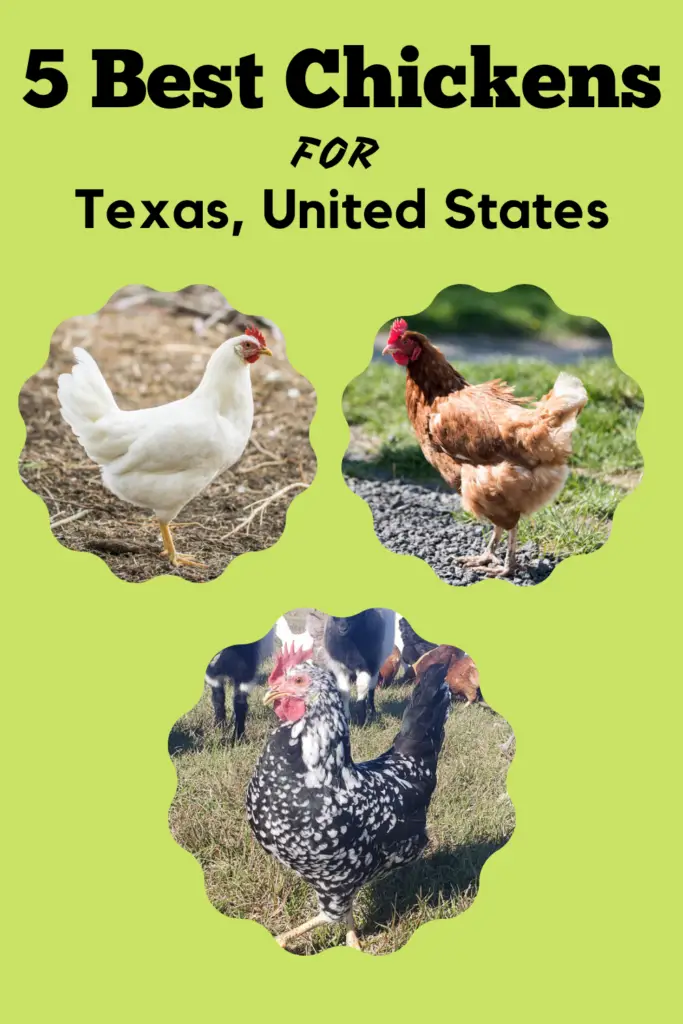
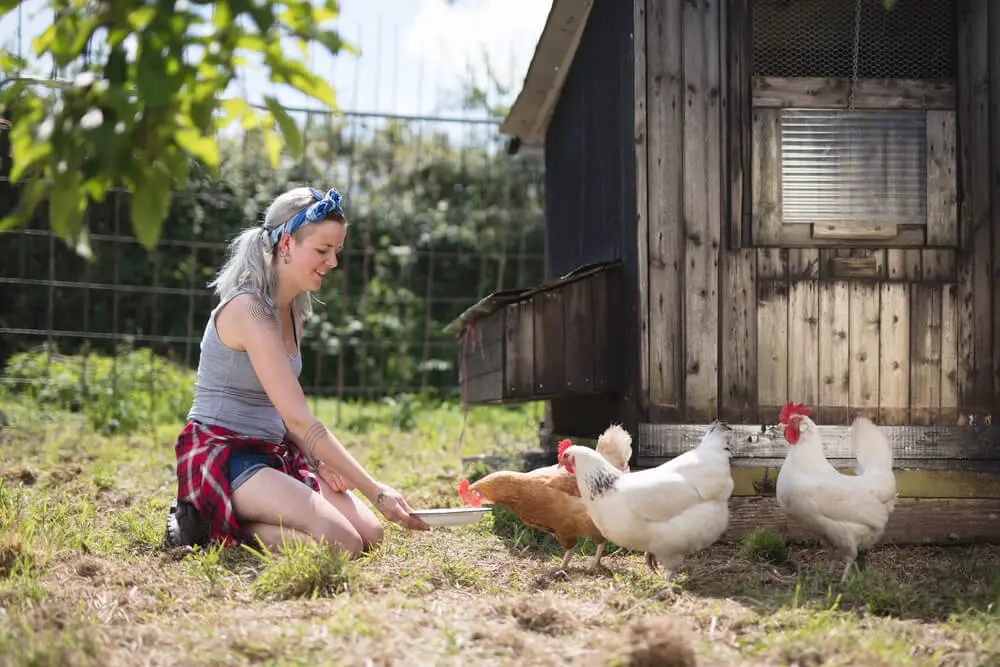
Shannon Stansberry has been engaged in the business of raising chickens for more than 12 years. In 2016, she accomplished the Agriculture & Natural Resources program at Mt. San Antonio College. At present, she tends to more than 80 chickens on her 4-hectare farm. Shannon regularly shares her insights and experience on how to raise healthy and contented chickens on the platform Typesofchickens.com
